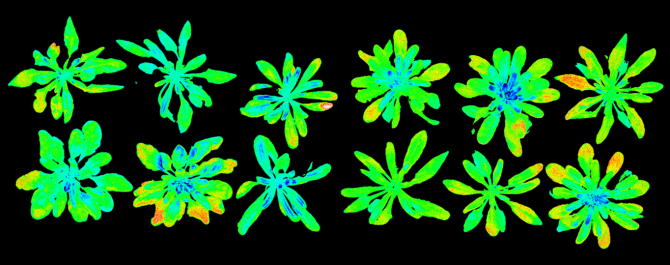Scientists have uncovered genetic variation in the unexplored DNA of the photosynthetic and energy factories of Arabidopsis plants, which plays a crucial role in the efficiency of photosynthesis in plants. These groundbreaking insights—published today in the prestigious journal Proceedings of the National Academy of Sciences (PNAS)—pave the way for more productive, climate-resilient crops that could contribute to sustainable global food security.
In addition to chromosomes, plant cells contain organelles in their nuclei. These are small specialized compartments with specific functions, such as chloroplasts for photosynthesis (capturing solar energy and CO₂ to produce sugars) and mitochondria (releasing energy from sugars). Both chloroplasts and mitochondria each contain about 100-150 genes that code for proteins essential to their function.
Uncharted territory of organellar genetic variation
For plants to function properly, optimal coordination between chromosomal, chloroplastic, and mitochondrial genes is essential. However, until now, little was known about the significance of organellar genetic variation and how it influences plant performance.
Researchers from Wageningen University & Research (WUR) and Michigan State University are changing that. In a study published yesterday on the website of the prestigious scientific journal PNAS, they demonstrate that genetic variation in chloroplast and mitochondrial DNA plays a key role in the variation in photosynthesis among Arabidopsis thaliana (thale cress) plants.
"The role of variation in chloroplasts and mitochondria, particularly in energy production and photosynthesis, is something that could not be studied before-but now it can," explains Mark Aarts, professor of Plant Genetics at WUR, who supervised the research.
Analysis of 240 'cybrid' Arabidopsis lines
For their research, the authors developed a new method for generating so-called cybrids on a large scale. In a cybrid, the original chloroplasts and mitochondria are all replaced by those from another plant.

"By combining the chromosomes of one of four different Arabidopsis plants with the chloroplasts and mitochondria of one of 60 other Arabidopsis plants, we were able to create 240 unique cybrids," says Aarts.
The plants used in the study originate from a wide range of locations across Europe, Asia, and Africa, Arabidopsis' natural range.
This is the first time such a large set of cybrids has been produced. According to Aarts, this demonstrates that this approach could also be applied to agricultural crops, bringing a similar method within reach for plant breeding companies.
"In the past it was very complicated and time consuming to study the contribution of chloroplastic and mitochondrial variation to energy production and photosynthesis in plants-but now it is feasible."
Towards more efficient photosynthesis and plant growth
The efficiency of plant photosynthesis in the field is quite low when compared to solar panels. Crops utilize on average only about 1% of the solar energy that reaches the plant. Earlier research has shown that this efficiency could, in principle, be 5 to 6 times higher. Unlocking that potential is the focus of ongoing research at the Jan IngenHousz Institute in Wageningen, where two of the paper's authors are currently based.
In the past, efforts to improve photosynthesis focused primarily on utilizing genetic variation in chromosomes. According to Mark Aarts, this discovery expands the possibilities for plant scientists and breeders to explore and enhance energy production and photosynthesis. This can contribute to future crop varieties that better equipped to capture and utilize energy for optimal growth.
Aarts: "Enhancing the ability of crops to capture solar energy and produce reliable yields under varying environmental conditions is crucial for feeding a growing global population with climate-resilient, robust crops that are grown sustainably."






